In my last couple of visits to Catalina Island—the only developed tourist attraction in the Channel Islands archipelago off the coast of California—I've been trying to trace some of the remnants of the Wrigleys' time there.
But for all the looking I've done, there's been another clue to the Wrigley history on the island—and that can be found simply by listening.
Every 15 minutes, you can hear the Westminster chimes of the Catalina Chimes Tower—a set of "cathedral chimes" (like those found at Westminster Abbey) ringing out from atop a hill. (They originally sounded four times an hour from 7 a.m. to 10 p.m. — but now they're only between 8 a.m. and 8 p.m.)
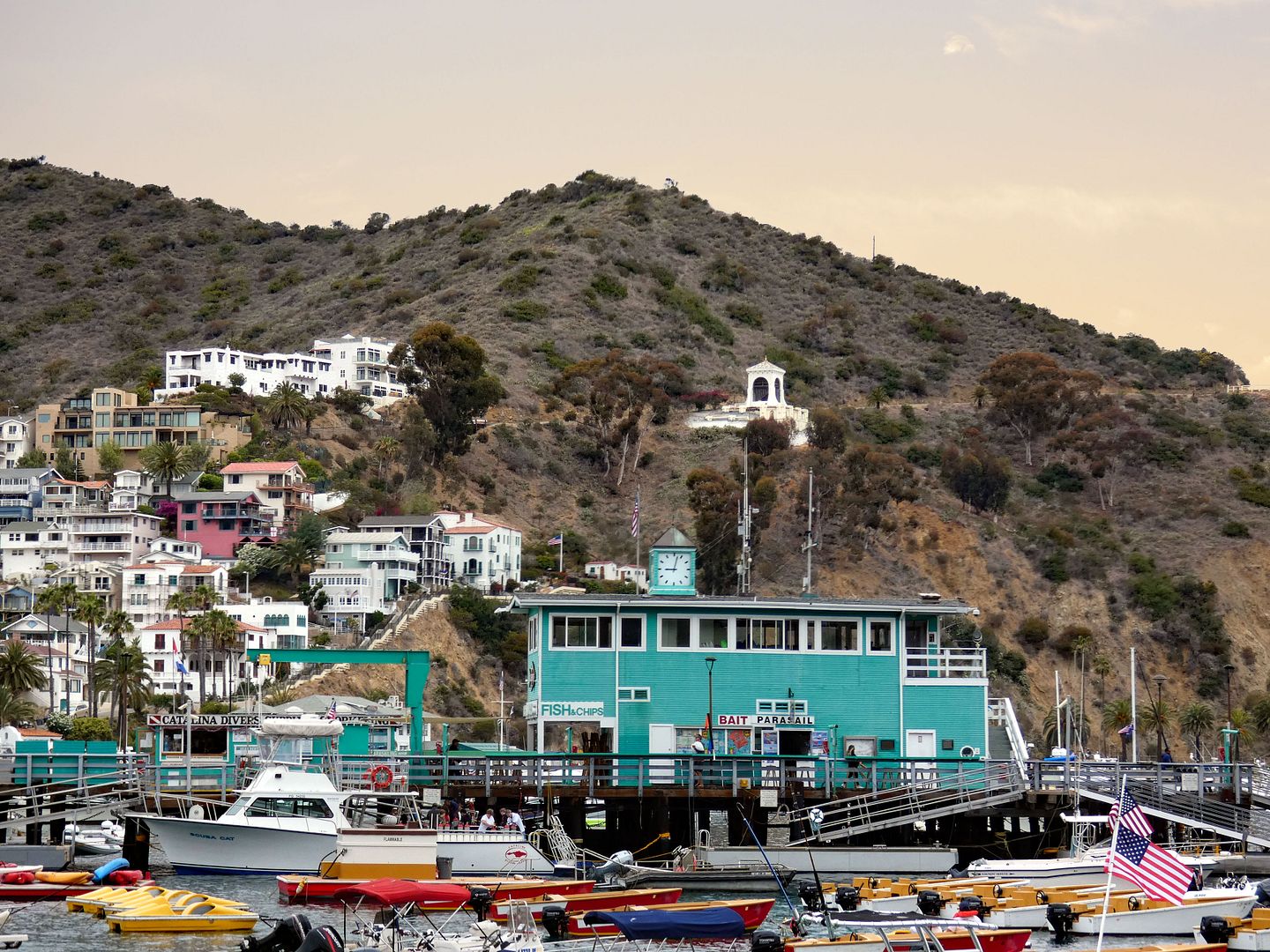
circa 2021, with some Photoshop magic
In 1925, William Wrigley, Jr. and his wife Ada purchased a set of Westminster chimes from the J.C. Deagan Company of Chicago. They brought them to Catalina and built a custom belfry to house them in, 230 feet above Avalon Bay. The bells first rang in 1926.
Until the 1950s, the chimes would bid hello and adieu to the arriving and departing steamer ships, with "welcoming melodies" like "Avalon" (the Al Jolsen version of which you can hear in the player above). Reportedly, the sound would "penetrate five miles out to sea" (and presumably still does).
 Avalon and bay from the Chimes Tower, Santa Catalina Island, California, 1940 (Baja California and the West Postcard Collection. MSS 235. Special Collections & Archives, UC San Diego)
Avalon and bay from the Chimes Tower, Santa Catalina Island, California, 1940 (Baja California and the West Postcard Collection. MSS 235. Special Collections & Archives, UC San Diego)The Chimes Tower became known as one of the most famous and beloved landmarks of Catalina's town of Avalon, even becoming a draw for tourists to take a trip on one of the famous steamer ships.
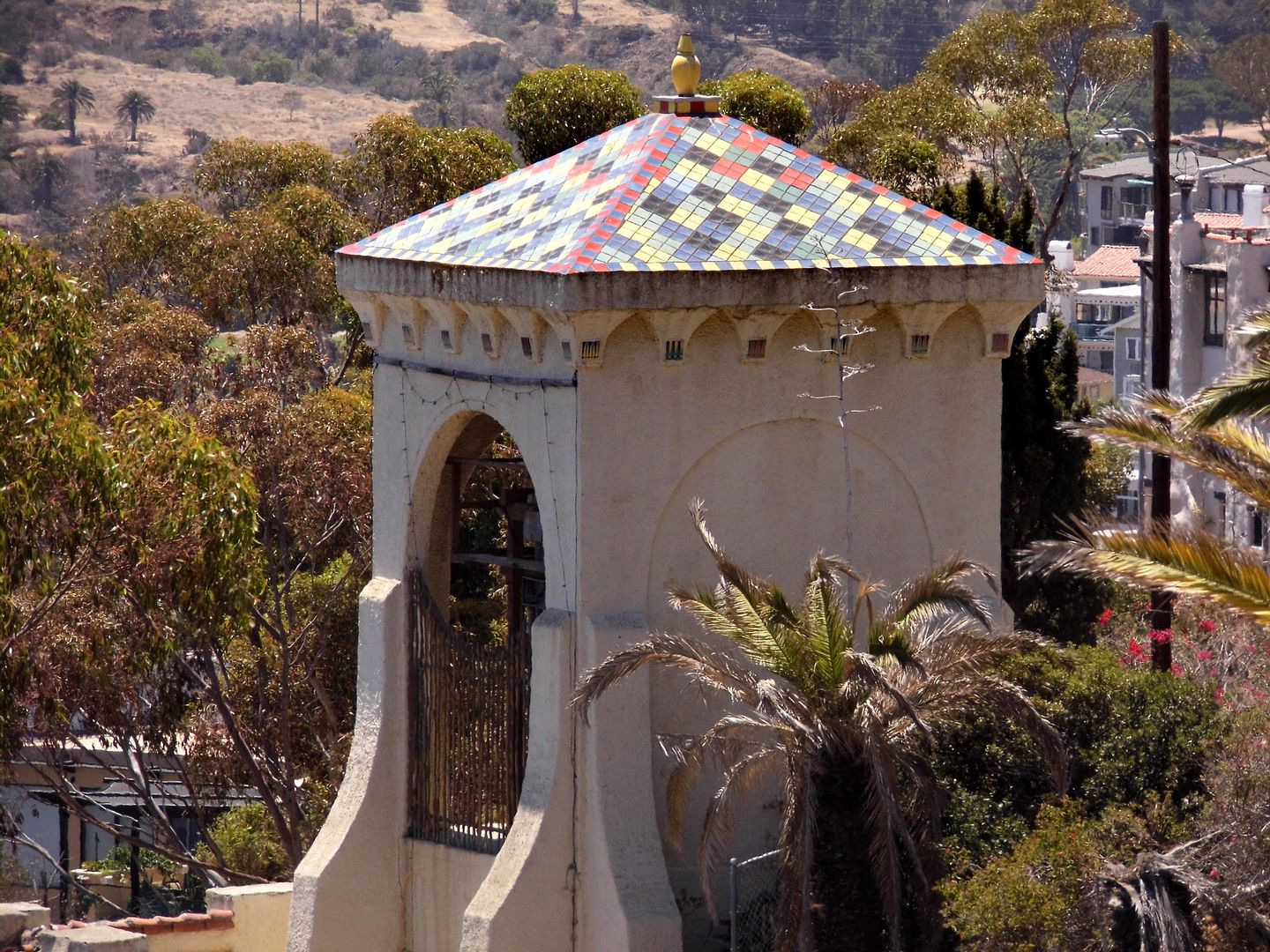 circa 2021
circa 2021But after 90 years—surviving the 1933 Long Beach earthquake and even a 1937 landslide—the Chimes Tower was getting rough around the edges. In 2015, The Catalina Chimes Tower Foundation formed to help preserve and restore it—a process that was underway when I visited the exterior back in 2021.

circa 2021
Earlier this month, I once again climbed the steep Chimes Tower Road, just below where the stagecoach ride used to take tourists up through the hills of Catalina, to get a closer look at the progress.

The superstructure—that is, the tower itself—had thankfully been declared structurally sound in 2016, with most of the deterioration (click here for detailed photos) being deemed cosmetic.
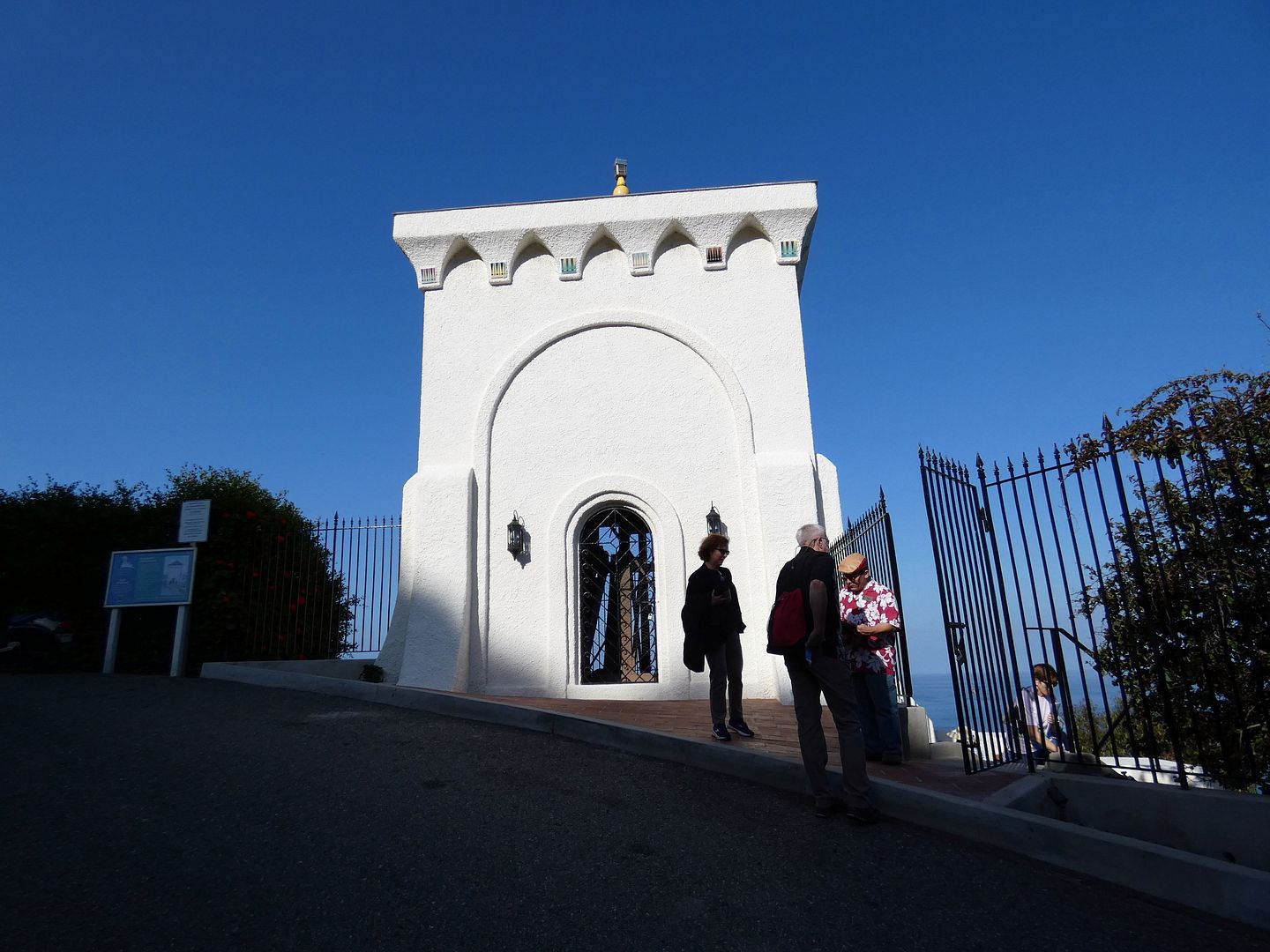
So, over the last few years, volunteers and other workers have been busy cleaning, rebuilding concrete perimeter walls, forging new wrought iron grates and fencing...
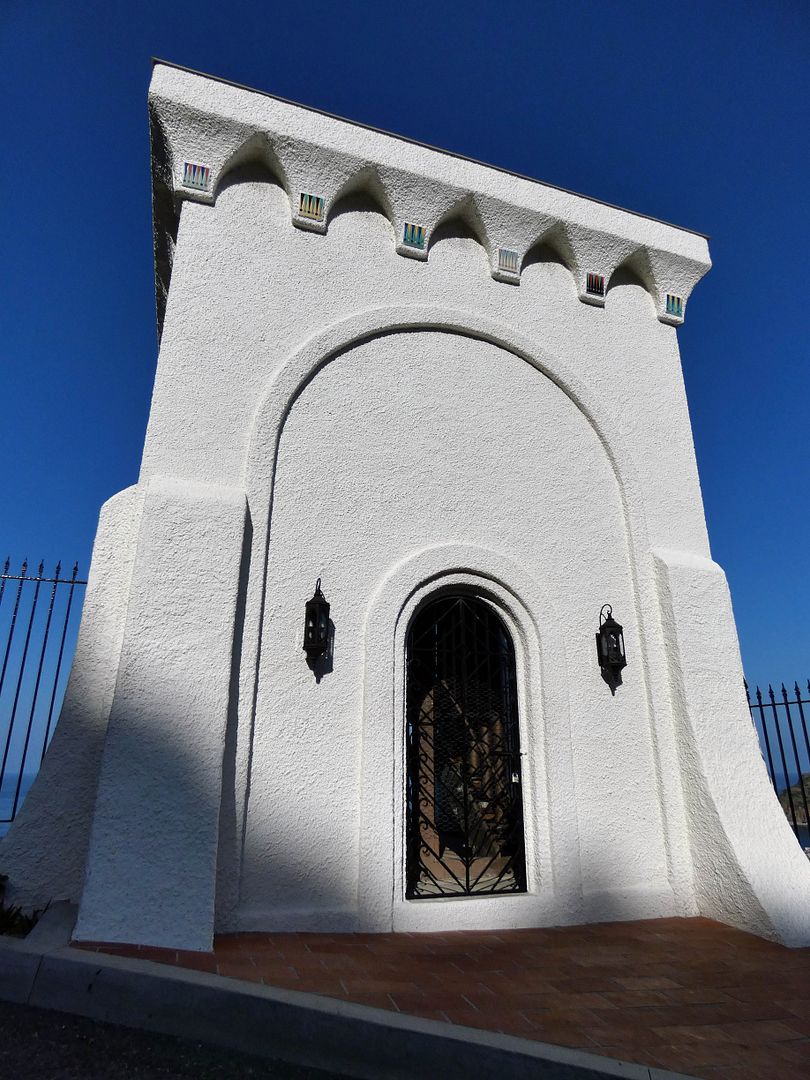
...repainting to return the Spanish-style campanario to a brighter white, installing tower lighting for nighttime viewing...
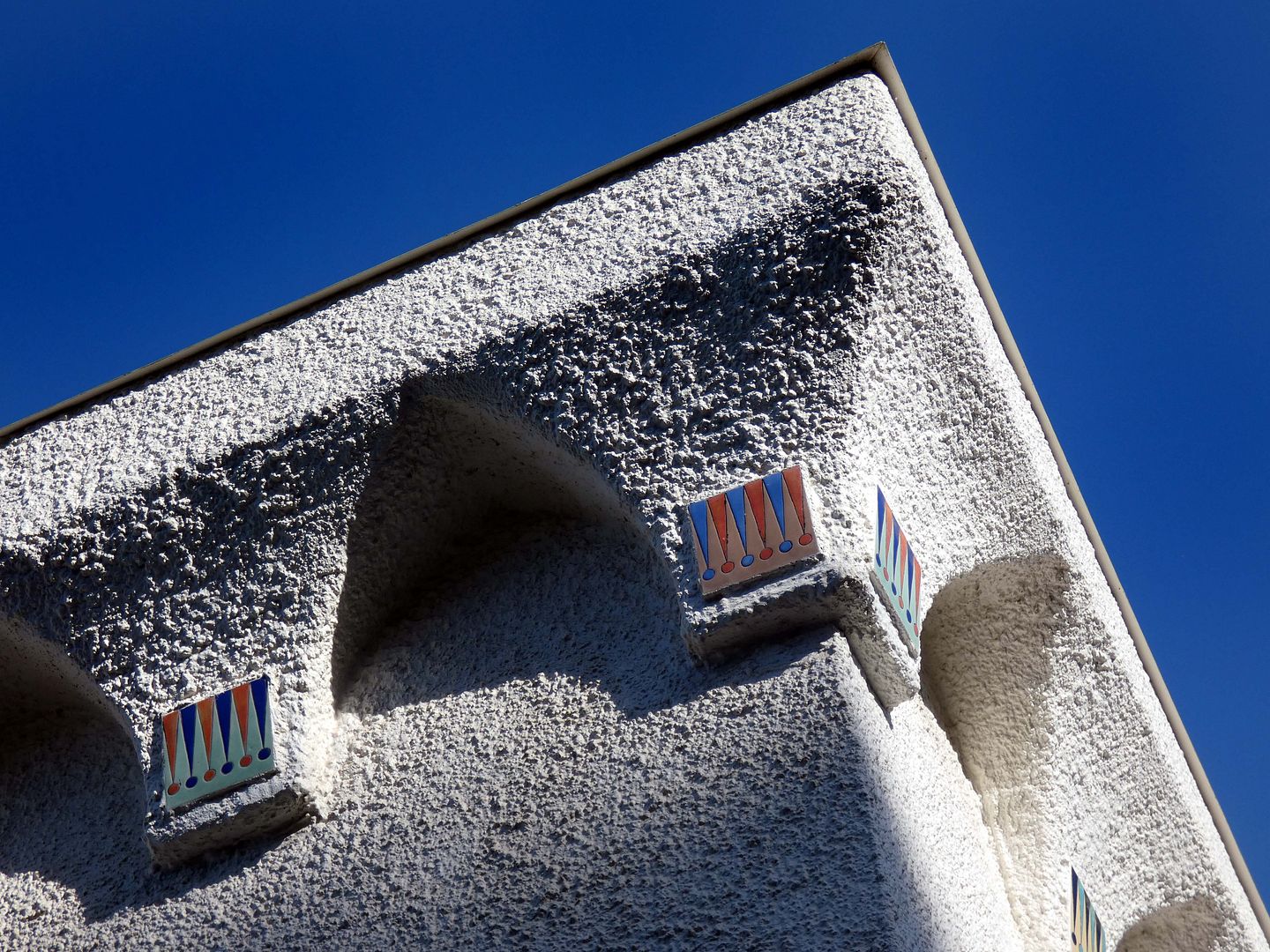
...and replacing tiles (both red terracotta roof tiles and multi-colored decorative tiles).
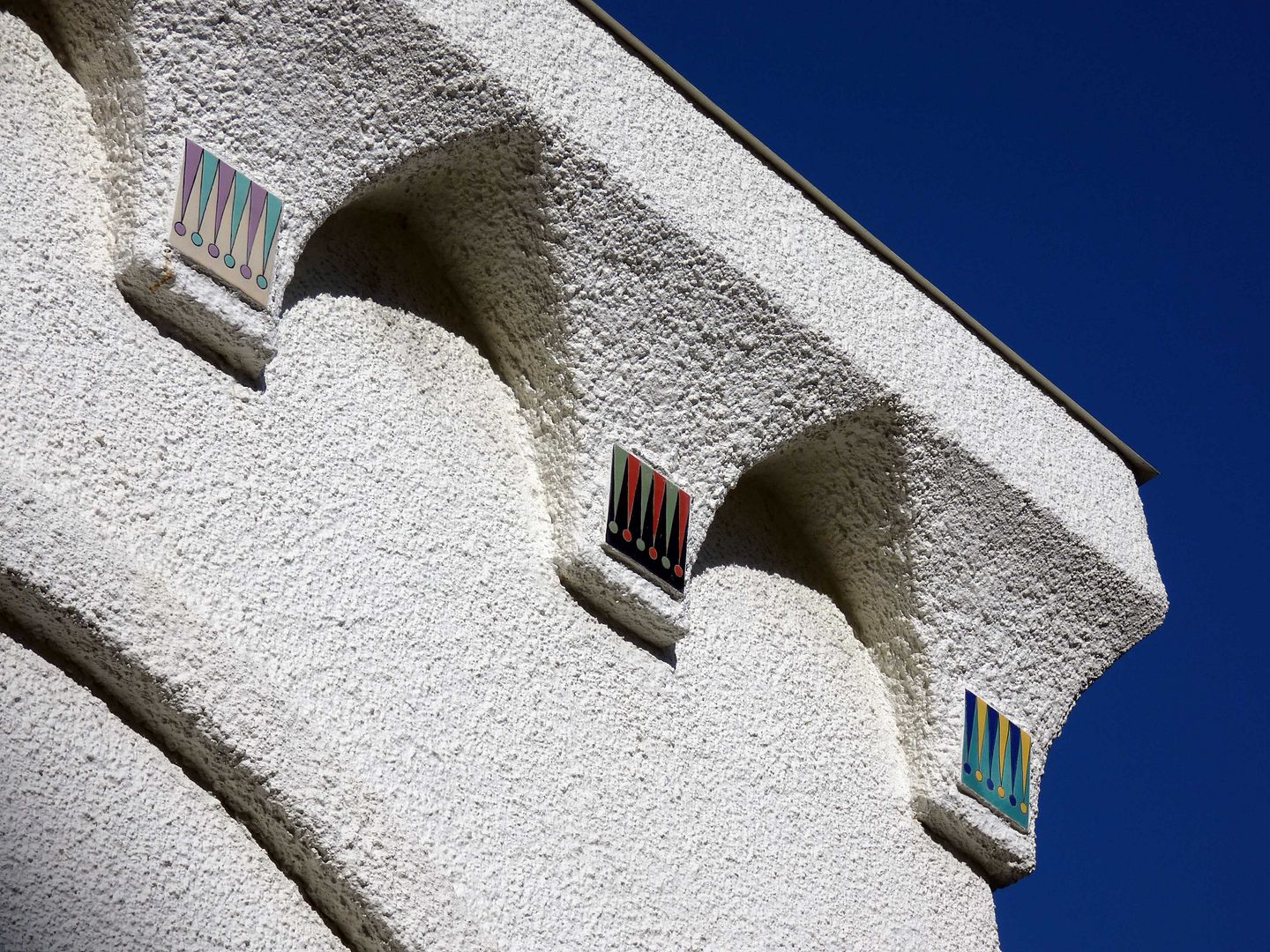
Slated for future restoration are the landscaping (which will feature oak trees, prickly pear cacti, toyon, St. Catherine's Lace, and other coastal California natives) and a full repair of the chimes and their mechanism.
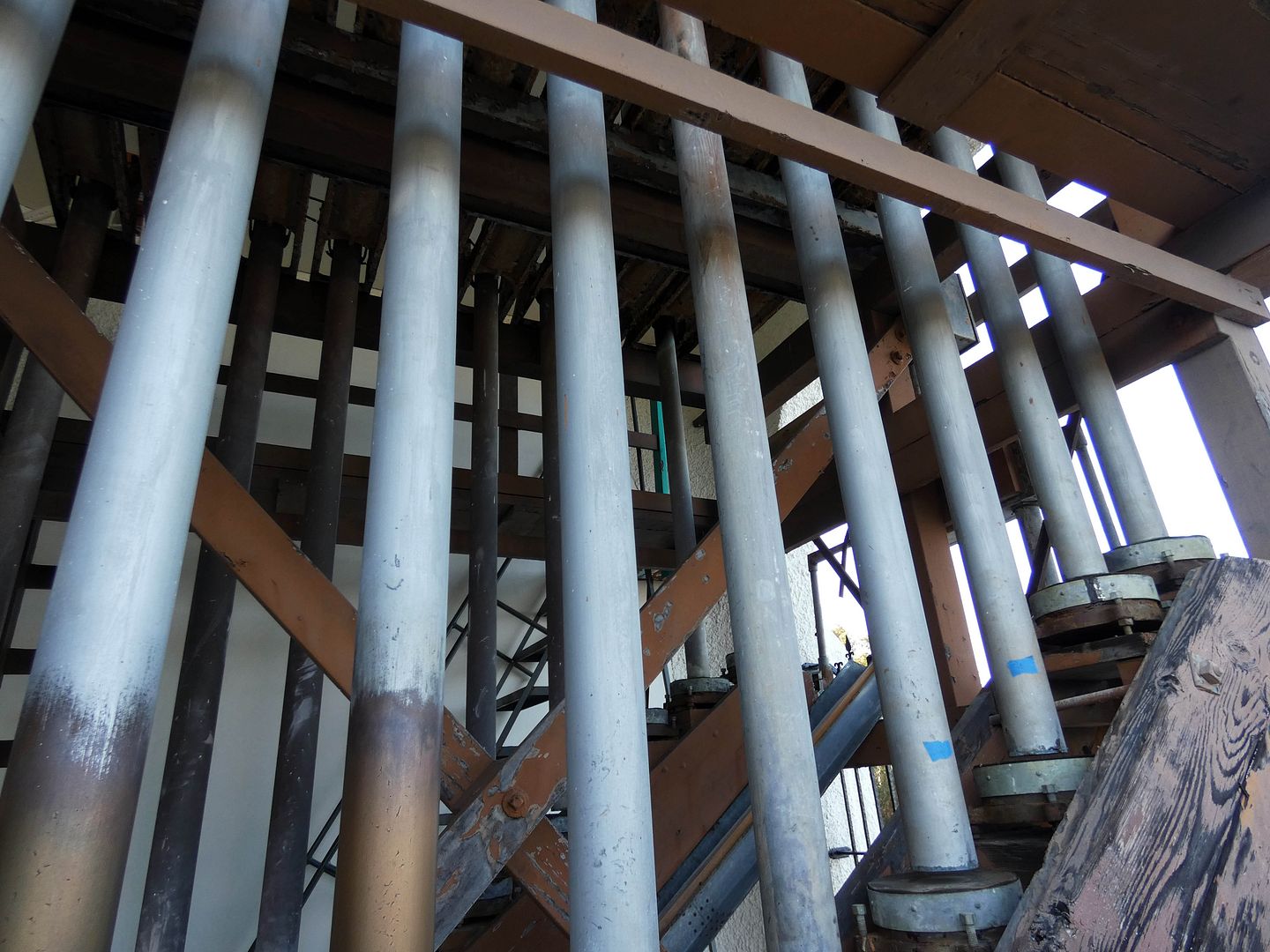
Oh, the chimes do still work—and you can still hear them throughout the island. In fact, on our tour for the Art Deco Society of Los Angeles (hosted by Catalina Chimes Tower Foundation), we got to hear them up close—and louder than you could ever imagine. (The dampers could use some work so they don't go bonnnnnnnnnnnnnggggggg seemingly forever.)
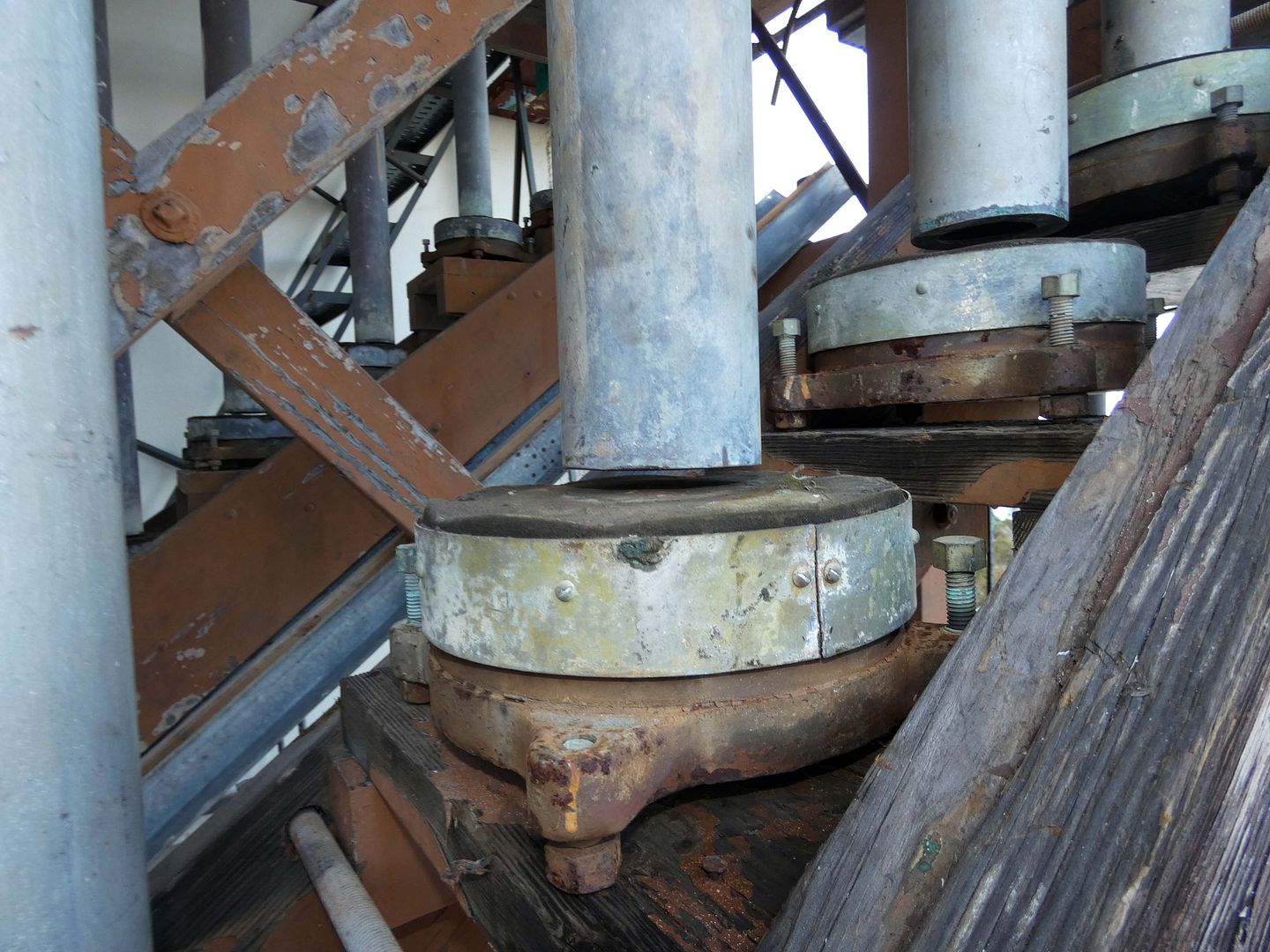
There are 20 tubular bells—long steel tubes, the longest of which is 13 feet—that play 20 individual tones on a chromatic scale, one-and-a-half octaves from D to A (including the sharps and flats in between).
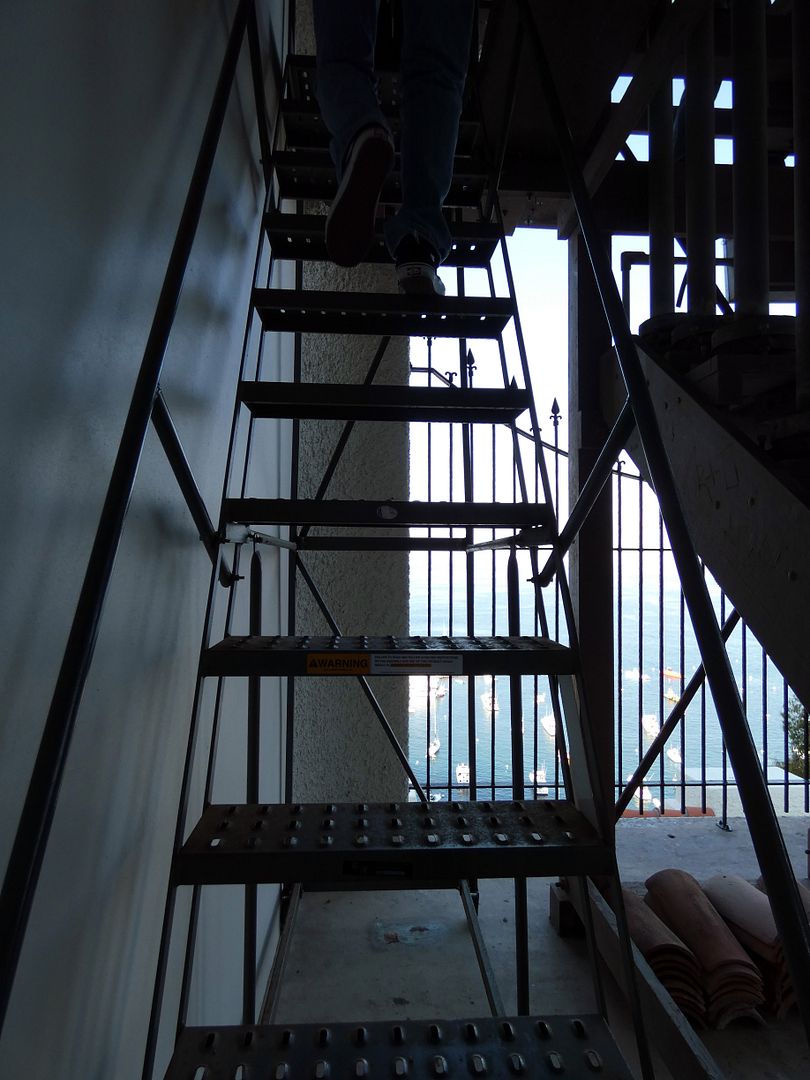
The real treat for me during my visit—and the part of the tour I didn't expect in my wildest dreams—was being able to climb the metal stairs to the top.
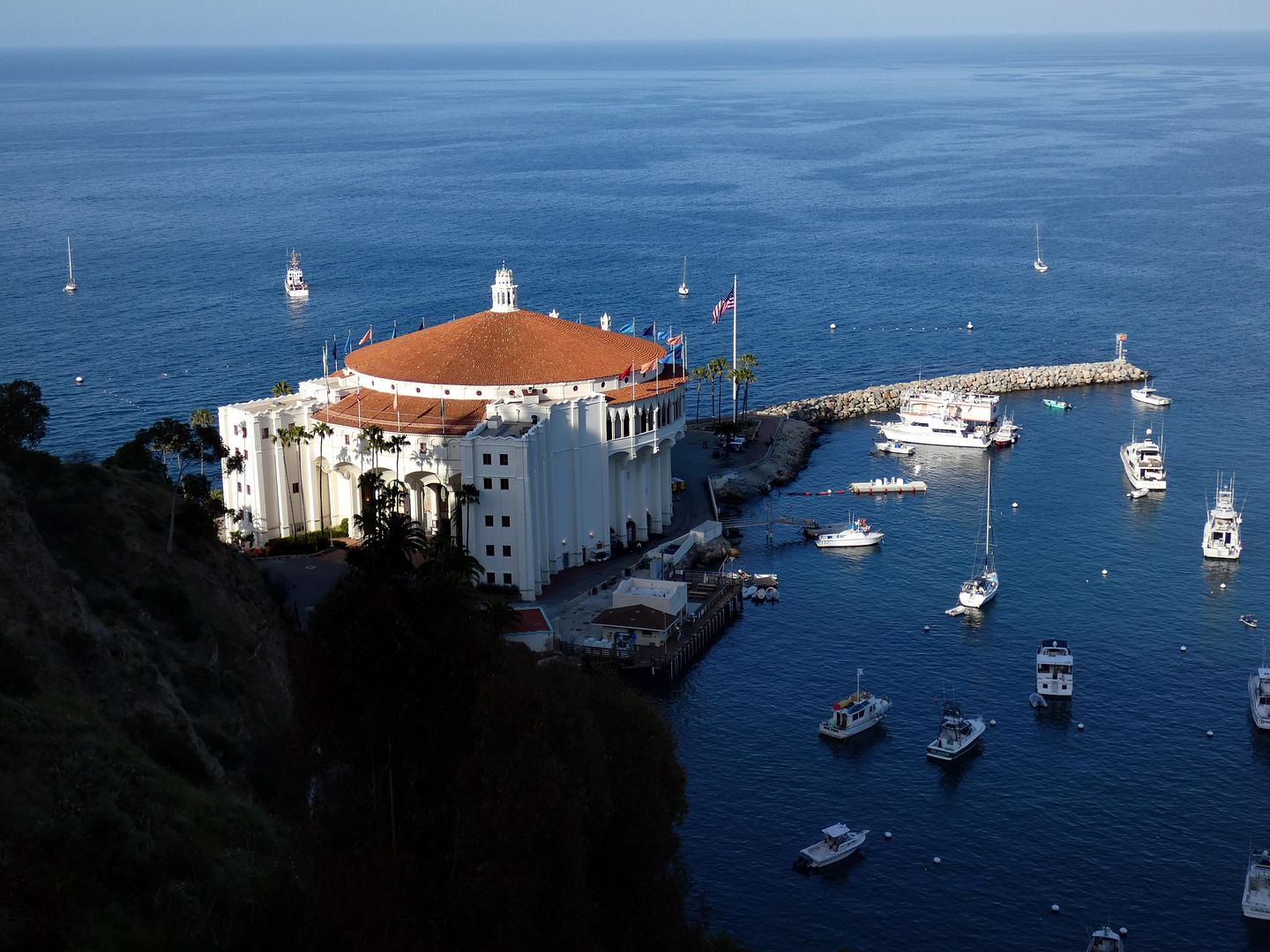
From up there, we didn't just get a great overhead view of the Catalina Casino...
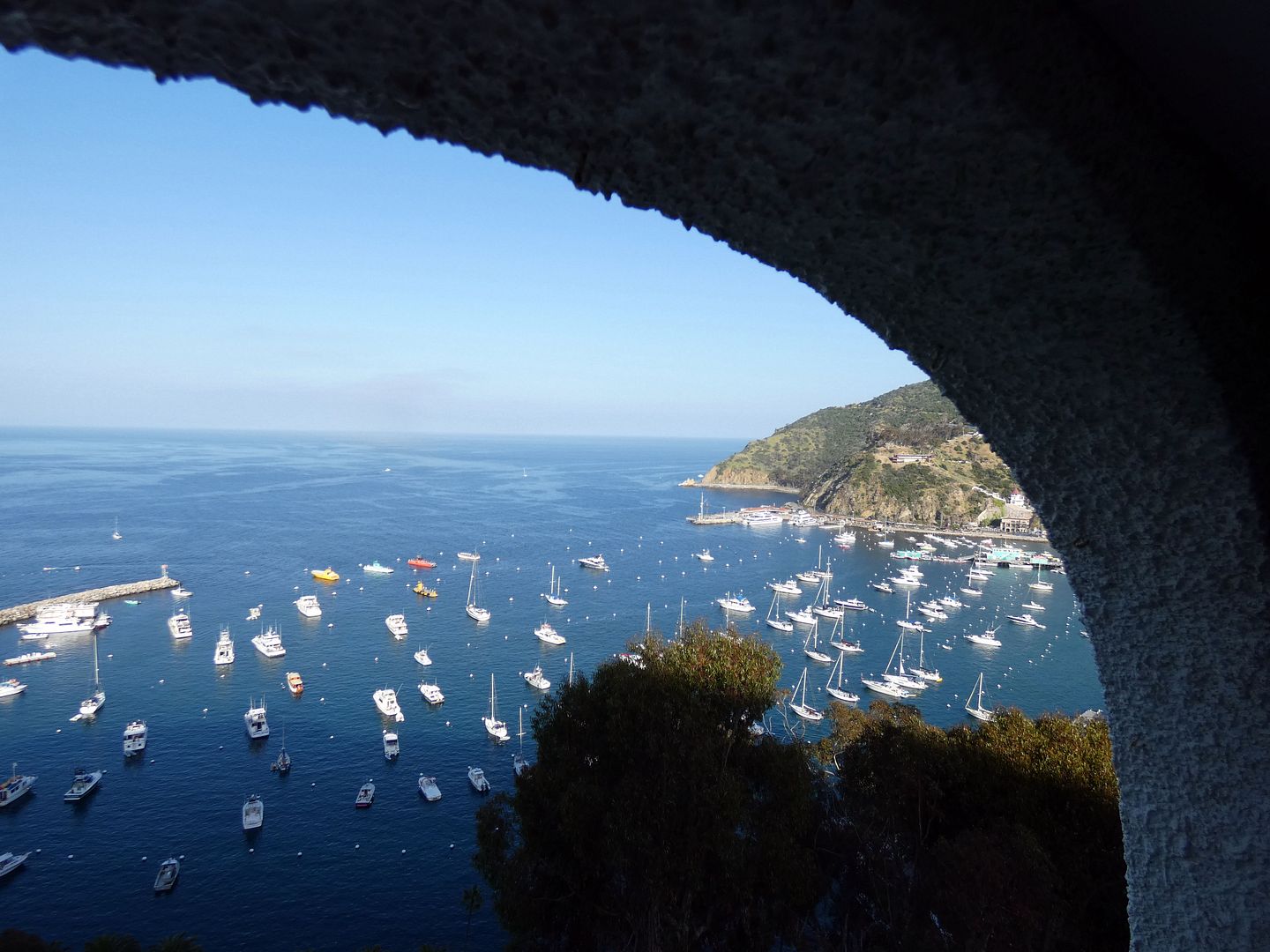
...and of Avalon Bay.

We actually got to witness the striker mechanism, whose action is normally obscured underneath a weatherproof hood (bearing the manufacturer's mark).
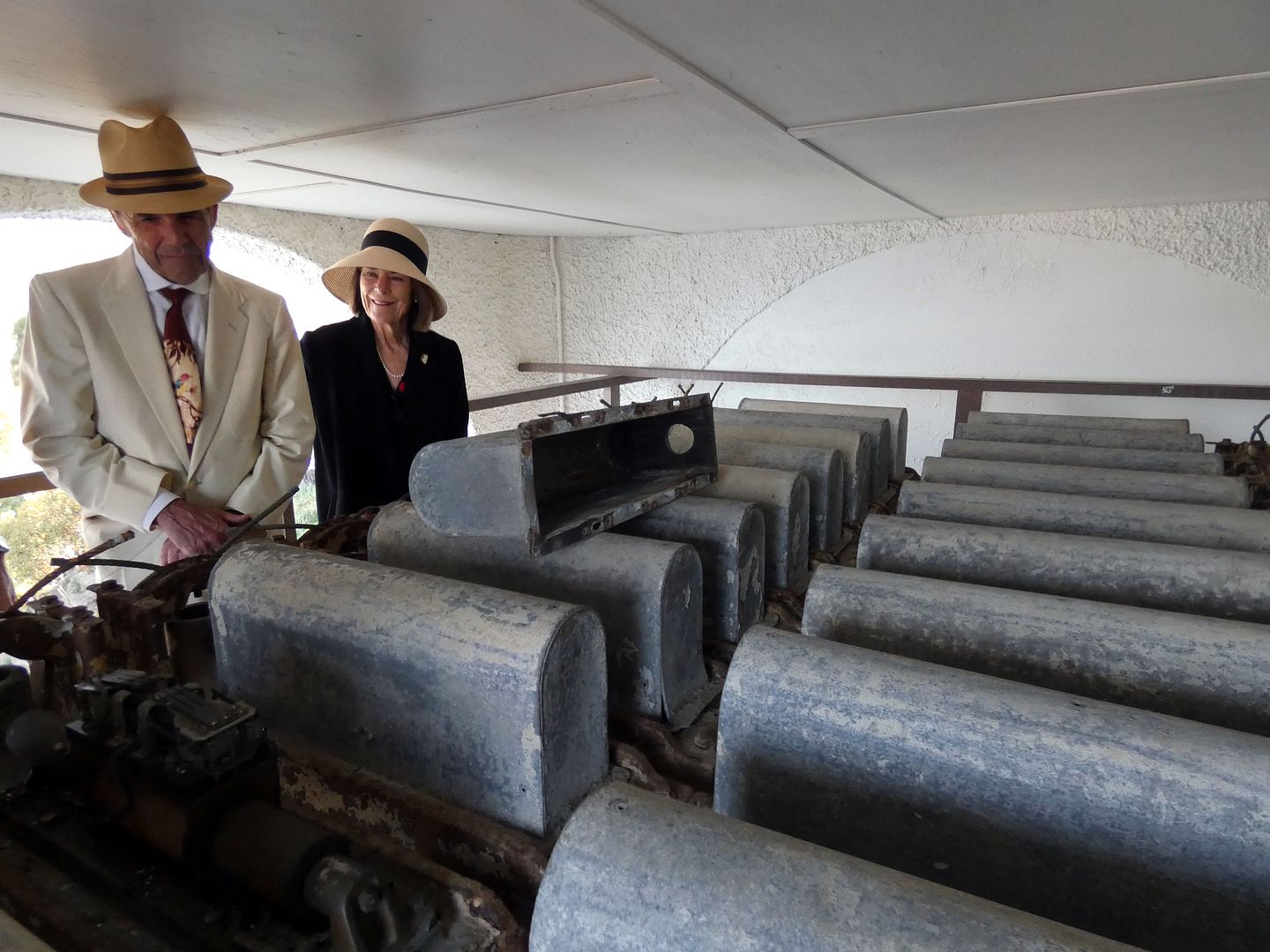
This is where an electrical current helps propel a plunger into the bells, striking a mighty blow that's faster and more powerful than any human could achieve on their own.
Did I mention it was loud?

Next on our tour, we headed down to the control room beneath the chimes, where a cabinet houses the electromagnetic solenoids, which trigger the plunger when activated by the current from the striker mechanism.
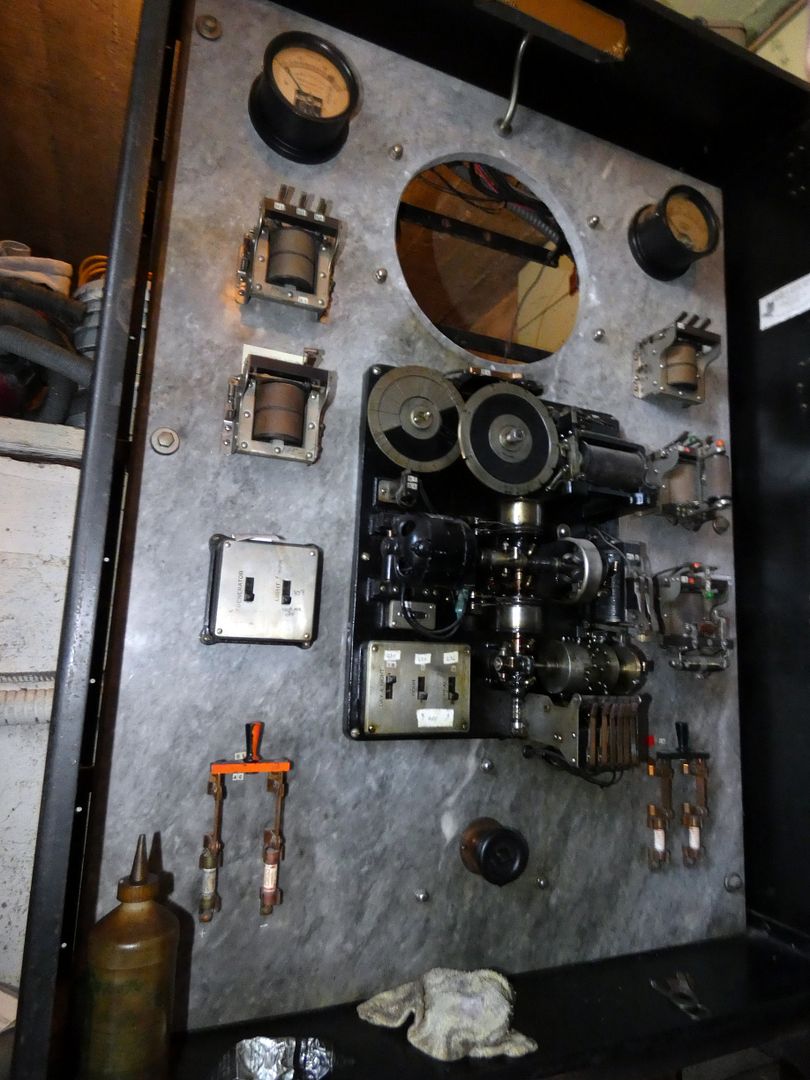
That's also where you can find the 3HP motor, a 45-volt generator, and a timer/clock that helps a drum make a complete revolution every hour (and toll a number of dongs corresponding to the hour, so 12 dongs for noon).
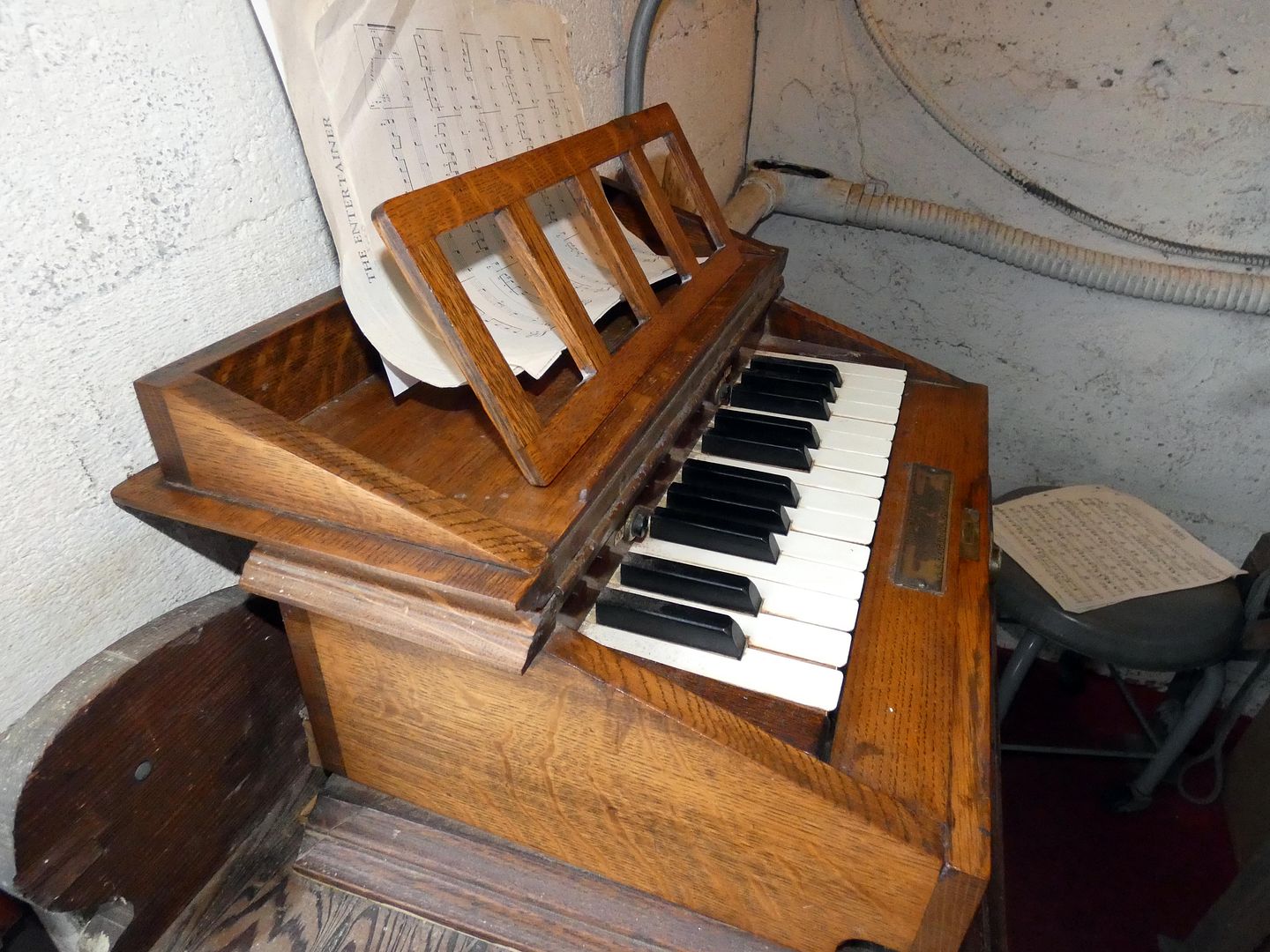
While most other chimes can only play five notes, the Chimes Tower's 20 notes are played via an electric-powered keyboard console, also located down below. (It used to be housed at the Steamer Pier, until the cable connecting it with the tower stopped working properly.) Pressing the keys on the keyboard requires "a slow, deliberate touch," as I learned firsthand. (Also you can't play more than one key at once, so no chords are possible.)
Otherwise, only Catalina-born Jani Eisenhut is allowed to play the chimes, which she's been doing since 1967. On special occasions, she'll deactivate the timer to suspend quarter-hour ding-dang-dongs so she can play other tunes, like for Easter Sunday sunrise service (historically), Christmas, or really whenever she feels like it. Jani gave our tour group an impromptu rendition of another locally-inspired favorite, "26 Miles (Santa Catalina)." (You can listen to a popular version in the player above.)
As 1926 article in the Visalia Morning Delta put it:
"Every moment is delightful at Catalina, and now each time you hear the chimes, you may know you have had another fifteen minutes of joy on the Magic Isle."
Personal timekeeping was rare in the 1920s, when beachgoers had to rely on public clocks and loud bell tolls to know how long they'd been out there (and when it was time to catch their steamship back home).
The steamers retired in the 1950s—and these days, we all carry cell phones and/or wear watches to keep us from running late or missing the boat (both literally and figuratively).
But the bells still offer a welcome soundtrack to island time, day and night, day after day and night after night. And the tower is once again a beacon for seafarers and landlubbers who might find themselves a little bit lost.
See the before-and-after views of the restoration progress in the presentation by The Catalina Chimes Tower Foundation in the player above.
Related Posts:

Wonderful reporting!
ReplyDelete